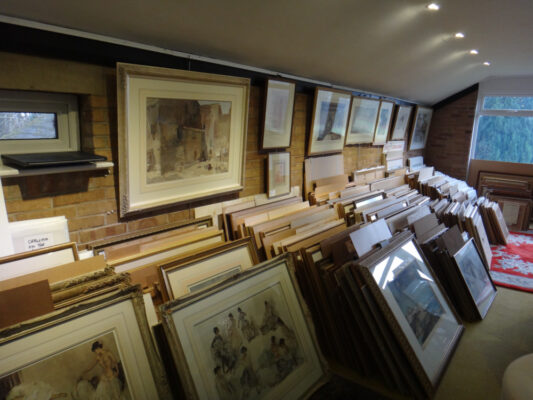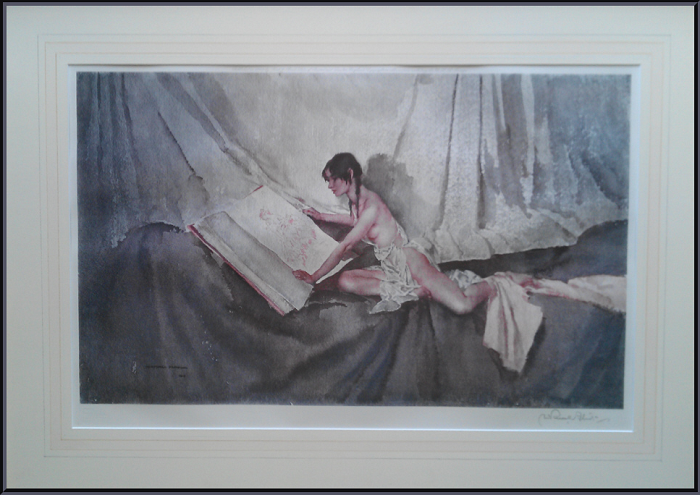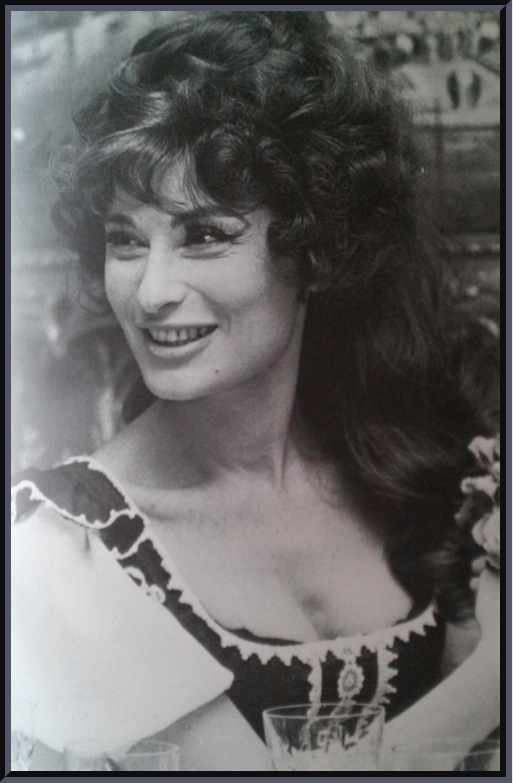The Royal Society of Painters in Watercolour
Three years later he was offered the prestigeous position of President for “The Royal Society of Painters in Watercolour”, and throughout 1940-45, Sir William and Sybylle Flint made their home on a poultry farm in Devon. Having been in the Royal Air Force, Russell Flint could be permitted access to Devonport Dockyard,(this scene was published by Flint, and was critically acclaimed as a painting with wonderful perspective) and work, to his heart’s content.

Sir William Russell Flint
Sybille and William and were eventually able to return home to Peel Cottage in London,
and within 2 years he was awarded the title of Sir. Sir William worked as a watercolourist the entirity of his life until he died aged 89.
The professional work he produced as an artist over many years helped him to achieve the ability to create a unique style that became his forte. The paintings produced were looser and he was able to illustrate with superb professionalism, an array of depths that could give life to architecture and all manner of exotic material, not forgetting his models.
Russell Flint through the medium of his paintings has managed to give, and indeed still does immense enjoyment to thousands of people the world over.
The original watercolour paintings and limited edition signed prints, have now set the benchmark for artists and collectors worldwide, as a superlative excellence in the use of watercolour, and Sir William’s fine paintings are enjoyed by many and regarded amongst the most excellent works on paper to date.
Sir William was admired by his contemporaries, and had a warm personality which he was eager to share with people of similar minds.
Francis Wighton Flint had been an artist on a more commercial scale and, Russell Flint started work in a printing factory, working there for 6 years, and gained much knowledge about the industry including many processes that were involved in producing pictures. Russell Flint of Scottish descent originally came from Edinburgh, 1880, his natural flair for using a watercolour brush soon caught the attention of his work colleagues and private collectors.
Russell Flint became a Sir in 1947, and some 15 years later the paintings of Sir William Russell Flint were given the highest possible honour in a
large exhibition at the Royal Academy’s, Diploma Gallery.
It was at this time that the Royal Academy president, Mr Wheeler complimented the art of Russell Flint by describing it as wonderful piece of work and a puzzling skill.





